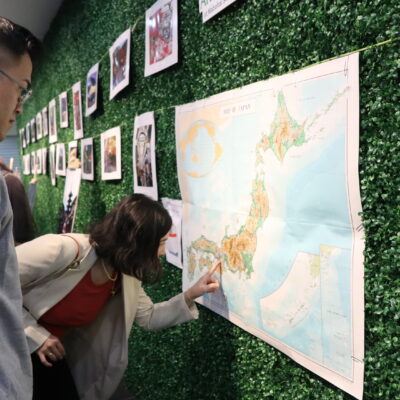Every Encounter Is A Special Moment: A sit-down with Wildlife Photographer Chien C. Lee
by Nova Renata
The Bornean rainforest — aged approximately 130 million years old — keeps plenty of hidden treasures up her sleeves. Her exotic beauty and mystical charm have beckoned curious seekers from around the world to come in exploration. For scientists and researchers, Borneo’s stunning biodiversity promises plenty of exciting encounters. It has been discovered that even on a single dipterocarp tree alone, one will be able to find 1,000 species of insects! Imagine what can be found in the rest of this tropical rainforest?
Such was the reason that first enticed young Chien Lee, a biologist and Californian native, to move halfway around the world to Sarawak for a job opportunity in 1996. 25 years later today, Sarawak has become a second home to Lee. Over the last two decades, Lee has also become one of the best-known naturalists in the region — now championing his cause by way of wildlife photography.
Lee is most passionate about getting people more interested in nature. Despite his hectic schedule and the ongoing ‘Borneo’s Tree of Life’ photography exhibition in Kuala Lumpur that is taking place until 30 June, he takes time to chat with us about his passion, inspiration and why Borneo is the muse for him.

BiG: So, tell us about yourself:
CL: My name is Chien C. Lee and I hail from the Bay Area or Northern California. My love affair with nature started as a child when I spent a lot of my time chasing insects and following animal footprints around our parks. Before moving to Sarawak, I completed my degree in ecology and worked briefly as an environmental educator in the East Bay Regional Parks District.
When I first came to Sarawak in 1996, my area of research was on pitcher plants, and for seven years, I managed a nursery and studied the native plant species. Along the way, I also fell in love with other wildlife, insects and frogs. I started my photography journey in 2003 when I was contracted for photography assignments. As a scientist, I realize that many people have a misunderstanding of wildlife and the jungle as something dangerous and intimidating. Therefore, I transitioned into photography intending to produce images that will help to inspire a deeper understanding and respect for our natural world.
BiG: What is it that you love about Borneo that has made you stay on for so long?
CL: I am particularly interested in tropical rainforests and, before the pandemic, I have travelled all over Indonesia, Madagascar and South America, as these regions are immensely biodiverse. As for Borneo, there is no telling of the wealth of biodiversity we have here. As we speak, there are still discoveries of new undocumented species of plants and wildlife being made even in city parks alone! There are thousands of species on the Borneo island that has yet to have names. This speaks volumes about how precious the Bornean jungle is.
Unfortunately, the jungle and other wildlife habitats are disappearing faster than ever. For me, it is vital to use photography as a means to bring attention to this problem, as well as to showcase how beautiful our jungle is and the importance of preserving them before it’s too late.
BiG: What do you think is the solution to rapid modernization that leads to wildlife habitat loss?

CL: To me, it is crucial to change the land management strategy to preserve our green pockets. People are also to respect and appreciate nature more. In my opinion, people tend to fear the jungle and this creates a separation. Fear separates people from the reality that the rainforest is so much safer than the city. Fear also perpetuates the stigma against nature that robs them of the opportunity to experience it.
I hope there will be more environmental education for schoolchildren that will inculcate the love and appreciation for nature. On my part, I seek to tell the beautiful stories of nature through photography. Hopefully, this will awaken the desire in people to just experience the jungle and the magic it contains.
BiG: What’s the most memorable moment you’ve had as a wildlife photographer so far?
CL: Every time I encounter shy animals, the experience is special. One of my most memorable moments is encountering a clouded leopard in the wild. Besides photography, I am also frequently engaged as a guide for specialist biological tours and film projects across Southeast Asia. My role is to get more people to understand that animals are very afraid of people. Therefore, to see wildlife, people need to be patient and quiet. Behind every photo of a spotted animal, there is so much time spent waiting, along with bits of knowledge and luck.
An animal encounter is never promised, no matter how much time you spend in the jungle. Therefore, every encounter is a special moment on its own.
IG: @chienleephotography
W: photos.chienclee.com
This article was first published in the April-June 2021 “Where The Wild Things Are” issue of BiG Magazine.





